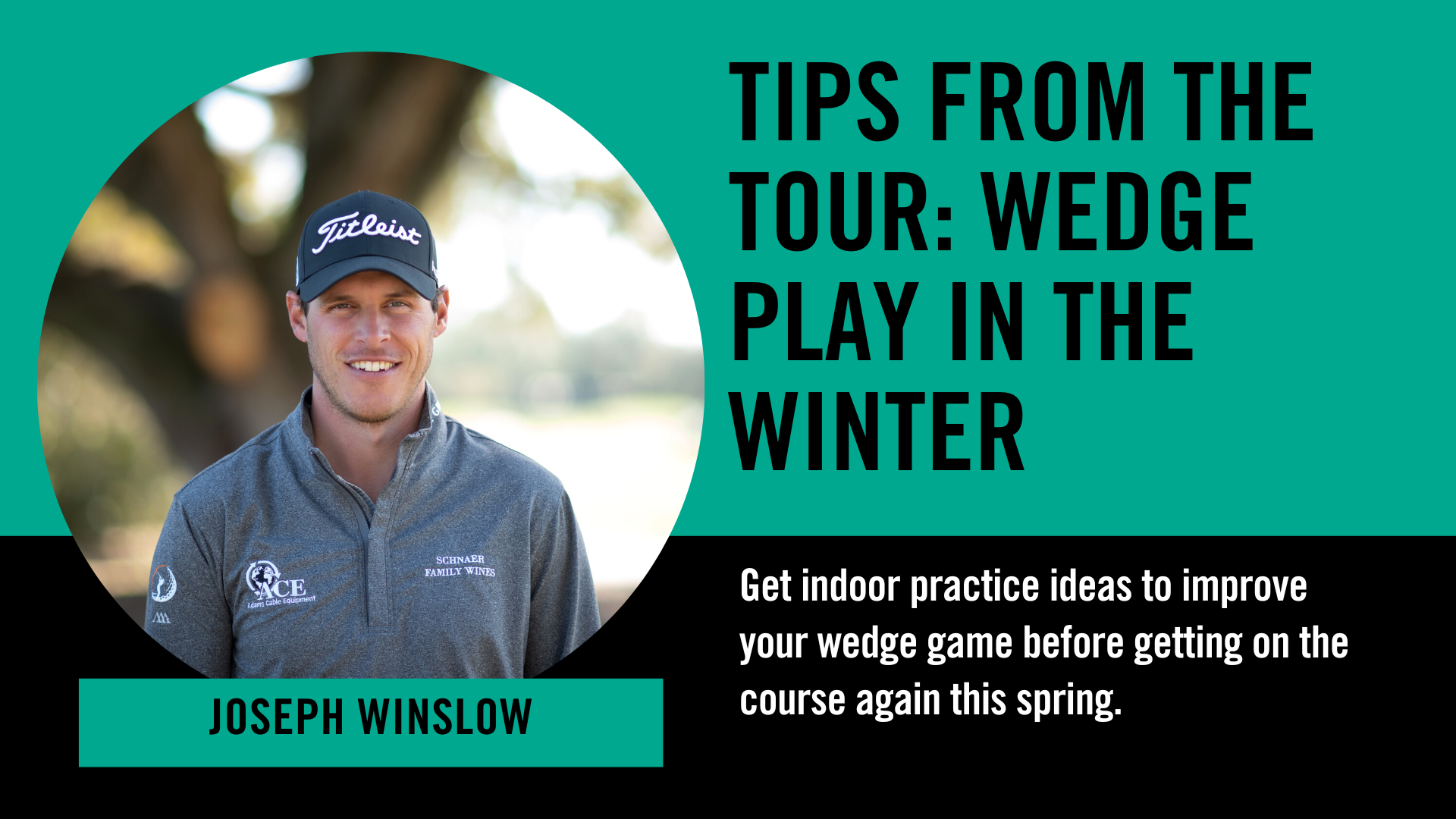Wintertime in Kansas. For most, that means football, sitting by the fireplace, ice skating at Crown Center, or any other indoor activity. Yes, the days have gotten short, and the grass has gone dormant…the opposite of what any avid golfer wants to hear. This doesn’t mean we have to stop playing the game we love! Our environment can cause our golf game to be “rusty” when we come back to playing in the spring. The excitement of the first round in spring weather shouldn’t be hindered by the frustration of performance. I’m here to help you overcome that by giving you options and opportunities to practice even on the worst days! In this edition, we are going to improve our wedge play.
When it comes to wedges, the key to success is precision. On Sunday, when you’re watching the PGA TOUR, pay attention to how well the pros hit their wedges. They routinely make birdie or save par, because of their wedge play. They have practiced this to where they know exactly how far they can hit each one. We can take an aspect of that practice to our own games to help us improve our performance too.
Three ways to practice wedges in the winter:
Indoor Simulator
- Pay attention to carry distance. You can control this via club speed (how fast you swing) and by swing length (how big of a swing you make). Carry distance and club speed are measured on most simulators.
- Find a swing length and speed that you can replicate with ease (ex. shoulder-high back swing to shoulder-high follow-through). The best part of using a simulator is that it allows you to quantify each shot.
Indoor Net without a Simulator
- Focus on contact. We want to hit the ball in the middle of the face to create the most consistent shot we can. Without quantifying with a simulator, one of the best things we can do is focus on being able to make consistent contact.
- Create a feel for how big of a swing you are using. Sometimes it works to think that the club works on a clock (for example, a right-handed golfer might have the club go to the 10 o’clock position on the backswing and finish at the 2 o’clock position for the follow-through). Other people can relate to the places on their bodies. The 10 o’clock backswing example would equate to a shoulder-high left arm at the top of the backswing for a right-handed golfer. Either method is great; play around to find out what works best for you! Taking video can be an excellent way to see how big of a swing you are making. Set up the camera for a face-on view.
At Home: Using a Mirror
- Focus on setup position in a mirror. We want a consistent setup with ball position- further back in our stance creates lower ball flight, and further up creates higher ball flight. We want to create a consistent ball position for success. I would suggest playing the ball slightly back in the middle of your stance. Work on setting up to the ball consistently each time in the mirror. If your ceilings are tall enough, you can practice making different backswing lengths and seeing them in the mirror. This can help develop a feel for what size of swing you are making, and then when you get the opportunity to hit balls, use that feel and see how far the ball goes with each one.
- Visualize with your mind. It is incredible how powerful visualization is. Every pro visualizes their shot clearly before they hit. Think about the best shot you have ever hit with a wedge; think about how great the contact felt, the flight of the ball in the air, the green grass, and how the ball landed and rolled right next to the hole or went in! Spending five to ten minutes a day just visualizing hitting great wedges (or any golf shot) is going to help you become a better golfer. You will be amazed at how ready your body and mind are for performance after doing this.
I hope these options help you to get through the toughest part of the year for golfers. There is no reason to let the winter in the Midwest hold us back from accomplishing our golf goals in 2024 or keep us from enjoying the game we love! I’m excited to share more tips from the TOUR to help you with your game this year. As always, please reach out to your PGA Professional for lessons to help your game with this. They are prepared and equipped to help you become the best player you can be. Have fun and good luck!
See you on TOUR,
Joseph Winslow is a contributing writer for Central Links Golf. He is native to Kansas City and is a professional golfer. He has played around the world on the Korn Ferry Tour, PGA TOUR China, and PGA TOUR Americas. He was an NCAA Honorable Mention All American at the University of Iowa and graduated from the University of South Florida. Joseph brings insight and advice from a competitive playing perspective to help you in your practice. Follow along with Joseph’s career as he continues to work to win around the world.
